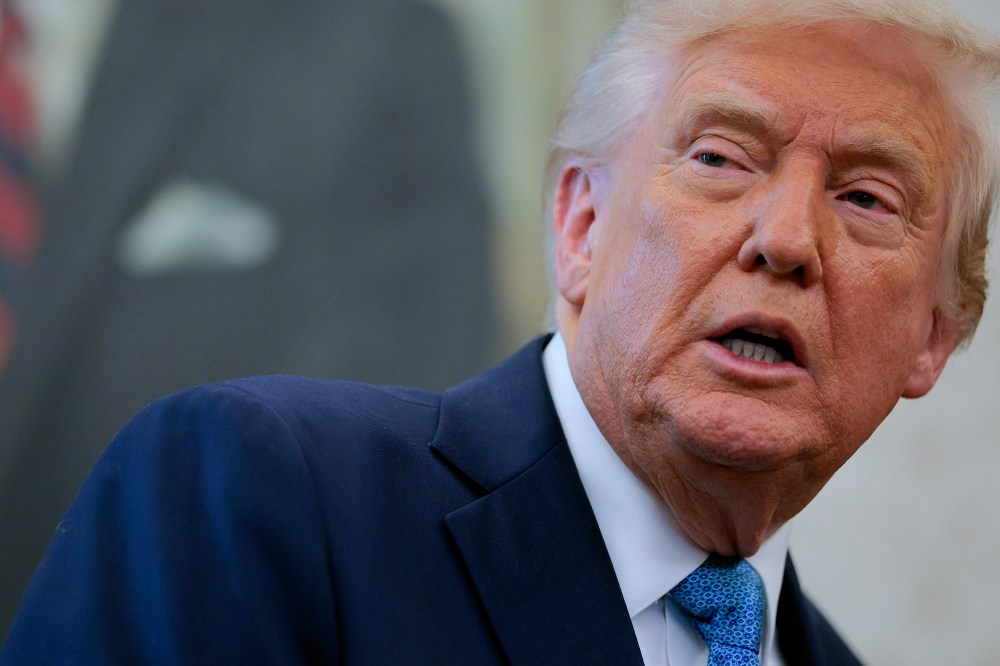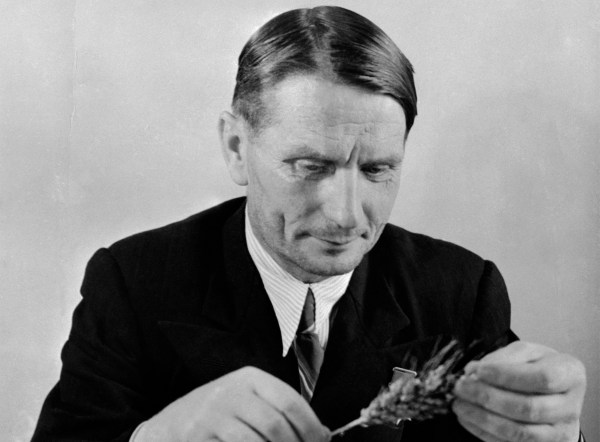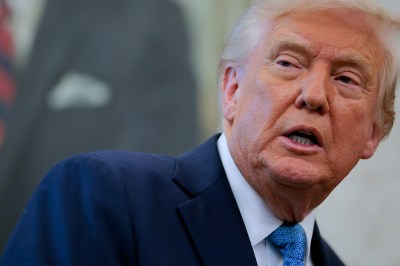“It is clear from [Vladimir] Putin’s attack on Kyiv that he still does not believe there are any negative consequences for continuing the war,” former House Speaker Newt Gingrich wrote this morning about the latest massacre of Ukrainian civilians. “The West has not yet convinced the Russian dictator that the alternative to a ceasefire is a lot greater threat to his regime. Until he fears that there is a serious consequence he will continue lying and fighting with stunning cynicism.”
That’s correct, save for two words. What do you mean by “the West,” Newt?
“The West” isn’t averse to imposing consequences on Moscow. Apart from the proto-fascist American right’s hero in Hungary, every European leader I can think of is foursquare behind Ukraine. Even NATO’s most authoritarian member is open to sending peacekeepers after the war ends to prevent the Russians from returning.
Faulting “the West” in this case for failing to get tough with Putin is transparently a rhetorical contrivance designed to shift culpability away from He Who Must Not Be Blamed. It’s like when MAGA diehards fault “advisers” for Donald Trump’s policy debacles. Whichever idiot told the president to declare an unsustainable trade war on the whole world at the same time should be fired.
It’s not “the West” that’s looked the other way for weeks while Putin has flagrantly defied the White House’s ceasefire demands. And it sure ain’t “the West” that routinely criticizes Volodymyr Zelensky more harshly, and more often, than it criticizes Putin. In fact, I’d be keen to hear Gingrich explain why he believes America should still be considered part of “the West” at all.
What has he seen over the past three months of Donald Trump’s leadership that convinces him the United States remains aligned with the Western liberal order that’s prevailed since 1945?
Consider the take-it-or-leave-it peace plan that, ahem, “the West” submitted this week to Ukrainian officials. Under the terms as reported by Axios, Russia would receive formal U.S. recognition of its sovereignty over Crimea, informal recognition of its sovereignty over the territory it has seized in the Donbas, guarantees that Ukraine won’t be admitted to NATO, relief from the sanctions America has imposed on it since 2014, and “enhanced economic cooperation” with the United States.
In return, Ukraine would receive magic beans—some minor territorial concessions, a vague promise of financial assistance in rebuilding, and a supposedly “robust security guarantee” that’s short on specifics and makes no mention of an American role. The U.S. would also gain control of the country’s Zaporizhzhia nuclear power plant, the biggest in Europe, conveniently leaving Ukrainians at the mercy of “the West” for their future energy needs.
Nothing about that proposal is meaningfully pro-Western. A cynic might even wonder if it was designed to be so unpalatable to the Ukrainians that they’d have to reject it, creating a pretext for the Trump administration to “move on” from the conflict by cutting off military aid to Kyiv.
It reminds me of the president’s declaration of trade war on “Liberation Day” insofar as both gambits amount to the United States resigning its membership in “the West” as we’ve known it. No more will we follow the postwar international consensus supporting free trade, Trump seemed to say, and no more will we default to favoring liberal democracies that find themselves in conflict with postliberal autocracies. The Pax Americana is over, commercially and diplomatically.
That isn’t the only thing the new peace plan has in common with the dumbest trade war in history, though.
Political ignorance.
Assuming that the White House’s peace proposal is in earnest and not just a ploy engineered to make the Ukrainians choke, it’s shockingly ignorant of basic political reality.
The same was true of “Liberation Day.” I don’t know how the president imagined his tariff bombardment playing out, but it’s surprising how much he seems to have been surprised by the reaction. Trump being Trump, my guess is that he thought the stock market would dip for a few days before skyrocketing and that a teary Xi Jinping would call a press conference to beg him on camera for mercy.
He seemed not to anticipate that national pride and Xi’s own strongman cult of personality would force China to dig in and not let itself be bullied. Nor did he appear to grasp that investors would be so spooked by his recklessness that they might begin to dump U.S. Treasurys, signaling “no confidence” in America’s economic leadership and risking a global financial crisis. When Trump paused his new tariffs, he didn’t bother hiding the fact that the market response had spooked him in turn.
His Ukraine peace proposal—again, if it’s sincere—is similarly ignorant. Asking Kyiv to forfeit Crimea to Russia is a nonstarter, so much so that the country’s constitution forbids it. “Inside Ukraine, formal recognition of Russian control of Crimea would be widely viewed as a dangerous concession to a duplicitous rival and an abandonment of Ukrainians still living in the region,” the New York Times explained. “It would also dash hopes for reunification of the families separated by the 2014 occupation—when many pro-Ukrainian residents fled while their elderly or pro-Russian relatives remained behind.”
Zelensky can’t do it, and Trump’s team should have known that. To entice him into making a concession that painful, the White House would have needed to sweeten the pot by offering him the only thing he really wants, either membership in NATO or some copycat security guarantee backed by American might. The whole ballgame for Ukraine in this process is ensuring that Russia never again dares cross its borders; European militaries might one day be able to provide that insurance but right now only the United States can do it.
If, under Trump, we’re unwilling to do it, why bother asking Ukraine to do something as wrenching as conceding Crimea? It’s like asking friendly nations to band together to isolate China after you’ve gut-punched each of them with steep new tariffs. Why would they make a difficult sacrifice to satisfy an “ally” who no longer seems to care about their interests?
Credibility.
Which brings us to another parallel between the Ukraine peace plan and the trade war. In both cases there’s a paradox: The success of each gambit depends on American credibility, yet Trump is squandering that credibility hour by hour.
To incentivize businesses to relocate to the U.S. without blowing up the economy, he and his team should have introduced the new tariffs cautiously and resolved to stick to them in the face of pressure to retreat. That would have meant more modest rates with favorable treatment for friends over foes and a consistent message that new taxes on foreign imports were here to stay, encouraging companies to plan accordingly.
They did the opposite. They dropped tariffs on everyone all at once on “Liberation Day,” drew no distinction between allies and enemies (until after the “pause,” when they bore down on China), and committed a humiliating “oopsie” in their formula for new rates. White House deputies couldn’t agree whether the tariffs were etched in granite or merely the opening bid in a negotiation aimed at erasing current trade barriers. And Trump couldn’t stick to a number, frantically dropping rates on everyone except China after a market slide, then hiking rates steeply on the Chinese, then promising reporters on Tuesday that those rates would soon come down.
Whatever credibility he had on trade before is totally shot. In picking a tariff fight with Canada and Mexico before “Liberation Day,” he even violated a trade agreement that he negotiated himself. The recent sell-off in bond markets is a neon sign that investors no longer trust that the president has the faintest idea what he’s doing. At last check on Wednesday, he and his team were reportedly looking for a “face-saving off-ramp” even with Beijing.
He endeavored to bully the world; less than a month later, he’s never looked weaker. Why, at this point, would any American trade partner make a generous deal with him instead of waiting him out, letting him continue to melt down under the mounting pressure, and seeing where he finally settles?
Trump’s credibility on Ukraine is shot, too. For one thing, his peace plan is another example of him violating one of his own policies: In 2018 his State Department issued a declaration reaffirming that the United States “rejects Russia’s attempted annexation of Crimea and pledges to maintain this policy until Ukraine’s territorial integrity is restored.” Zelensky reminded the White House of it by posting the declaration online on Wednesday.
Trump’s new chief diplomat is also heavily compromised on the issue. In 2022 then-Sen. Marco Rubio co-sponsored a bill that would have prohibited the U.S. from acknowledging Russian sovereignty over territory it seized from Ukraine. “The United States cannot recognize Putin’s claims or we risk establishing a dangerous precedent for other authoritarian regimes, like the Chinese Communist Party, to imitate,” he said at the time, sensibly enough. Now he’s the face of a U.S. effort to get Kyiv to cough up Crimea.
Even if Trump were willing to guarantee Ukraine’s security as part of a deal with Russia, his bizarre aggression this year toward NATO nations like Canada and Greenland means that no one can or should trust that he’d honor his obligation if called on to do so, further depleting his leverage. Here again, as in his trade war, he went about things entirely the wrong way: If he was ever serious about brokering a peace between Kyiv and Moscow, his best shot at earning Ukraine’s trust before asking it to make hard concessions was to put pressure on Russia to stop shooting. Having watched the president stand with them to end the daily slaughter of their citizens, Ukrainians might have listened to a request to part with Crimea.
Instead he berated Zelensky on television during a diplomatic visit, threw him out of the White House, and has done everything he can to suggest that Ukraine is the true obstacle to peace in the conflict. Steve Witkoff, his top liaison to Moscow, frequently sounds like a Kremlin propagandist. (“Why would [Russia] want to absorb Ukraine?” he asked Tucker Carlson in an interview, as if Putin hasn’t discoursed on that subject a thousand times.) And so the trade-war pattern repeats—Trump, ever eager to use bullying tactics to look “strong,” ends up looking like the weakest chump in existence as Putin goes about merrily bombing Ukraine in defiance of his ceasefire demands. The president can’t get the deal he wants because he won’t bully the side that actually requires bullying. He has no credibility.
Strategic illogic.
Yet the weirdest parallel between his trade war and the Ukraine peace process is the strategic illogic of both ventures. These are momentous policy efforts with world-changing consequences, but not only is there no clear game plan for achieving the president’s goals, it’s not clear what his goals are.
Is the goal of his trade war to bring jobs back to America and raise revenue for the government or is it to pressure our trade partners into ending all barriers to U.S. exports? You can have protectionism or you can have free trade but you can’t have both—yet the White House seems to want both. Despite the fact that they contradict each other, we’ve heard both rationales from administration sources over the past month.
Meanwhile, by going about this process as chaotically as it has, the White House has guaranteed a terrible outcome for itself no matter what happens. In the best-case scenario, Trump folds quickly, markets stabilize, China says “no hard feelings,” and the president has to wear the fact for the next four years that he surrendered meekly on his flagship policy program—in a matter of weeks. Pathetic. So much for the art of the deal.
In the worst-case scenario, confidence in America’s economic leadership is already so badly shaken that markets continue to tank, Treasury yields rise, and a harsh recession ensues no matter what Trump does going forward. Perhaps China, having learned from this experience that it holds more “cards” on trade than the United States does, will decide not to resume its exports at pre-”Liberation Day” levels without some concessions from America.
The strategic logic of supporting Russia over Ukraine is just as inscrutable as the logic of Trump’s trade war. Michael McFaul, Barack Obama’s ambassador to Moscow, had to make a numbered list of the deficiencies of forfeiting Crimea under the new White House peace plan, so many were there:
(1) It is a reputational hit to the U.S. in the world; (2) Legitimizes use of force for annexation and encourages others to do so (think Taiwan); (3) Fosters division among our allies (a gift to Putin); (4) Fosters division within American society (gift to Putin and Xi); and (5) Alienates Ukrainians.
Handing Crimea to Russia would mark the first time since 1945 that a state has used military power to expand its own borders at a European country’s expense, historian Phillips O’Brien notes. In this case it would happen with America’s blessing. And other provisions of Trump’s peace plan would tee Putin up for more: The last thing Ukraine and its NATO neighbors need is for the U.S. to lift sanctions on Russia, as that would put Moscow on a fast track to rebuilding its economy and its military. If the goal of all this is long-term peace on the continent, that’s a funny way to go about it.
The White House’s surrender also seems to be coming surprisingly fast, as it did with tariffs. After promising ad nauseam during the campaign to end the conflict in 24 hours, Trump is threatening to quit the peace process (and to end military aid to Ukraine as a result, I assume) after three months of trying. Maybe those threats are empty and simply designed to pressure Kyiv, but given how quickly he retreated on tariffs, it’s more likely another case of strategic impatience foiling the White House’s not-so-carefully laid plans.
And as in the trade war, if he does cut Ukraine off he’ll leave himself with a pair of no-win outcomes in the making. Either the Ukrainian military will collapse and Russia will overrun the country, handing Trump a moral and political catastrophe that he’ll own just as entirely as he will the coming recession, or Ukraine will manage to fight on successfully with European support and the world will see that the liberal order no longer requires American leadership. Or wants it, perhaps.
Amid all this we’re left with a confounding overarching strategic question: What does the United States gain, exactly, by switching sides in a conflict between Russia and Europe?
Trump is supposed to be a “transactional” politician, forever demanding that foreign nations make it worth America’s while to partner with them. By most measures, the European Union is better positioned to do that than Russia. Its member states collectively have three times the population and 10 times the GDP. The EU is hungry for energy, and the United States happens to be the world’s biggest producer of oil and natural gas. Even Russia’s military advantage relative to the EU is no longer what it was after three years of bloodletting in Ukraine.
What is America getting in return for making enemies of Europe and a friend of Russia?
We’re not getting anything—which ends up being the most significant difference between the trade war and the Ukraine peace process. Both are examples of Trump behaving extremely ideologically but in the former case you can imagine certain material benefits accruing to the United States if tariffs actually, you know, worked. More U.S. jobs, a revitalized manufacturing base: There’s a bottom-line argument to be made for protectionism, just not a good one.
There’s no bottom-line argument for backstabbing “the West,” to borrow Newt Gingrich’s antiquated term, in order to ingratiate ourselves to a third-world mafia petrostate. It’s pure ideology on Trump’s part. He admires Russia’s authoritarian model, envies the power that it affords Putin, and would clearly like to emulate it here. That’s probably the closest we’ll get to a “strategic” logic for what he’s doing: The more he encourages his fans to believe that America’s liberal allies are actually enemies and that its fascist enemies are actually allies, the more willing they might be to reconsider which form of government would best serve their own country’s interests.
“The West” as we’ve traditionally understood it no longer exists. If nothing else good comes from Ukraine’s ordeal with the White House, and probably nothing will, at least we’ll all end up very clear about that.







Please note that we at The Dispatch hold ourselves, our work, and our commenters to a higher standard than other places on the internet. We welcome comments that foster genuine debate or discussion—including comments critical of us or our work—but responses that include ad hominem attacks on fellow Dispatch members or are intended to stoke fear and anger may be moderated.
With your membership, you only have the ability to comment on The Morning Dispatch articles. Consider upgrading to join the conversation everywhere.